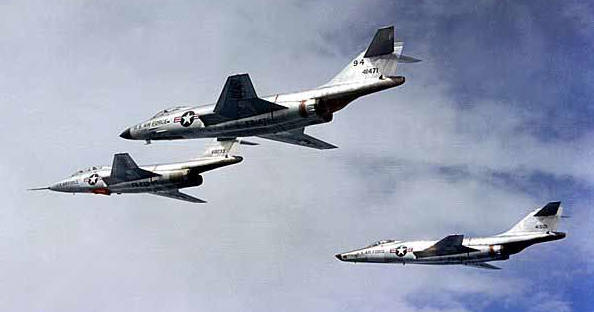|
|
|

|
Developed from the XF-88
penetration fighter, the F-101 originally was designed as a
long-range bomber escort for the Strategic Air Command.
But when the high-speed, high altitude B-52 jet bomber entered
service, escort fighters were not needed. The F-101's design was
changed to fill both tactical and air defense roles.
The F-101 made its first flight on Sep. 29, 1954. The first
production F-101A
became operational in May 1957, followed by the F-101C in Sep.
1957 and the F-101B in Jan. 1959. By the time F-101 production
ended in March 1961, McDonnell had built 785 Voodoos including
480 F-101Bs, the two-seat, all-weather interceptor used by the
Air Defense Command.
In the reconnaissance versions, the Voodoo
was the world's first supersonic photo-recon aircraft. The
RF-101 was the world's first
supersonic photo-recon aircraft. The program began in 1956
when 35 RF-101As
and 166 RF-101Cs were produced. Many earlier single-seat Voodoos
were later converted to the reconnaissance configuration.
The RF-101 was used widely for low-altitude photo coverage of
missile sites during the 1962 Cuban Missile Crisis and during
the late 1960s in Southeast Asia.
The
F-101A and F-101C are single place supersonic fighters built by
McDonnell Aircraft. The RF-101G and RF-101H are single place,
supersonic, long range photo-reconnaissance airplanes modified
from F-101A and F-101C airplanes by Lockheed Aircraft Service
Company. Their appearance is characterized by thin, short, swept
wings with triangular intake ducts in the wing roots, and swept
back empennage. The horizontal stabilizer is a one-piece unit
mounted high on the vertical stabilizer. The ailerons, mounted
on the outer trailing edge of the wings, and the empennage
control surfaces, operate through irreversible hydraulic systems
which produce required control surface deflections. Aerodynamic
feel is simulated by an artificial feel system. When production ended in March 1961, nearly 800 Voodoos had
been built.
|
|
